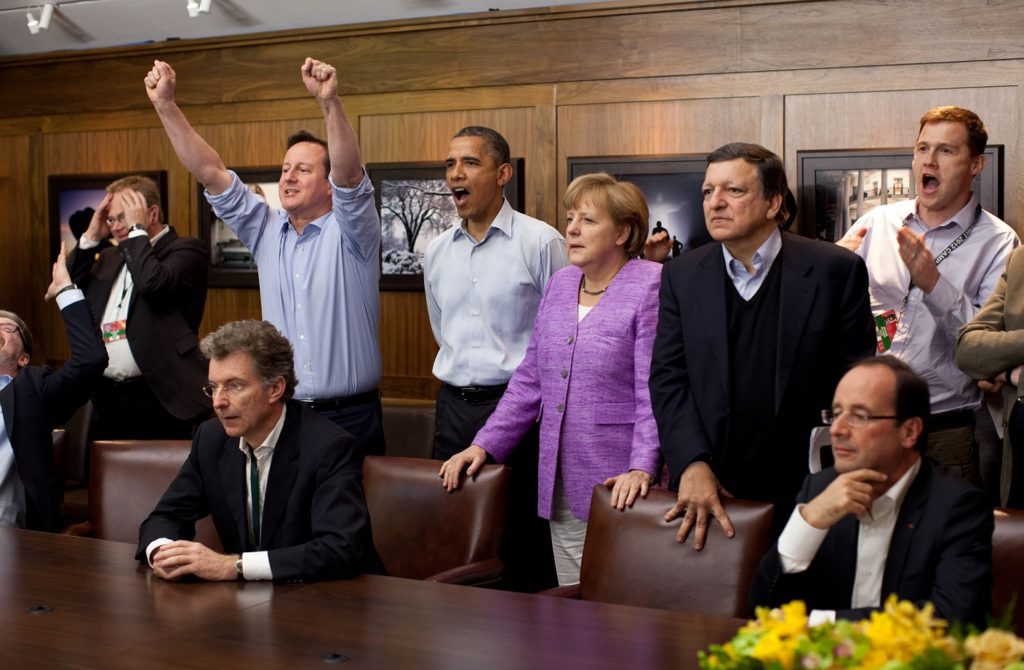The American Tories?
The United States differs from the United Kingdom in many ways. They have dollars; we have pounds. They call it soccer; we call it football. They drive on the right of the road; we drive on the left. The latter is a good analogy of both countries’ conservative parties’ positioning on the political spectrum. As an overall more religious nation, the U.S. is far more conservative than the U.K. and this is reflected in party politics.

If Prime Minister David Cameron were to join a U.S. political party I can say unequivocally he would join the Democrats, though his support of Republican John McCain in the 2008 presidential election muddies this. Moreover, if President Barack Obama moved to the U.K. he would almost certainly be a Conservative; maybe on his most leftist day, a Liberal Democrat. This confuses things massively as the common narrative of U.S. politics spooned to the British public is that the Democrats are equivalent to Labour and the Republicans are the Conservatives. Having followed and studied U.S. politics for most of my life, it has become clear to me that this comparison is shallow and not very accurate.
First of all, let’s look at where the two countries’ conservative parties are aligned. The only policy sphere the Republicans and Conservatives seem to agree on is economics. Both favour laissez-faire economics and deregulation. Both parties are loved by corporations and have a fascination with small businesses. Ronald Reagan is as revered by the Republicans for his Reaganomics as Margaret Thatcher is loved by Conservatives for her Thatcherite economic policies. Both Reagan and Thatcher were good friends in the 1980s, and both pursued similar economic policies.
In the 2015 general election, the Conservatives ran on the policy that anyone earning minimum wage would be exempt from paying tax. This proposal has been echoed by GOP candidate Donald Trump and shows the alignment of the GOP and Tories on the economy, though Trump’s disassociation with the Establishment GOP may suggest a lack of cohesion with the party’s British counterparts as this is a Trump policy, not a GOP one. Regardless, both parties are agreed on economic policy but this is where the two nations’ conservative parties similarities end.
The Conservatives, though often accused of deploring it, continue to maintain the welfare state. This shows their commitment to one nation conservatism and contrasts with the hatred of socialistic institutions from GOP members. Former Republican presidential candidate in 2012 and 2016 Rick Santorum called for an abolition of all welfare programs not authorised in the Constitution. Whereas British conservatives are more likely to accept compassionate one nation conservatism, their U.S. contemporaries are vehemently opposed to even the slightest move towards socialism, even if this would benefit the millions of Americans without health insurance.
Socially the Tories are not very conservative. David Cameron’s coalition government with the Liberal Democrats legalised gay marriage, however, this could arguably be due to the centrist Liberal Democrats’ influence. The religious right dominate GOP politics and if a member showed support for same-sex marriage, they would likely see their status diminished. Moreover, the Conservative Party are overwhelmingly pro-choice; in fact, abortion is not as a hot topic in the U.K. as it is in the U.S. Pro-choice GOP politicians are seldom and not one of this cycle’s cohort of frontrunner presidential candidates were pro-choice, though Trump was at one point.
All of this evidence leads to one natural conclusion: the Democrats are the American Tories. I am not claiming David Cameron is a bleeding-heart liberal but he is definitely a centrist when compared to the likes of Donald Trump and Ted Cruz. U.K. politics seems to not have a party fitting of the title of being the equivalent to the GOP, but UKIP comes very close.
